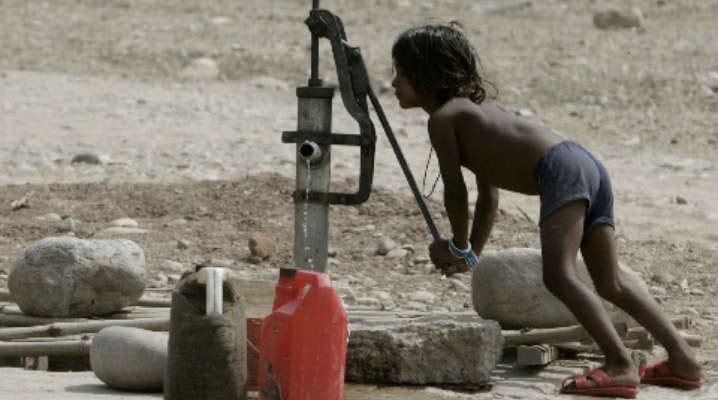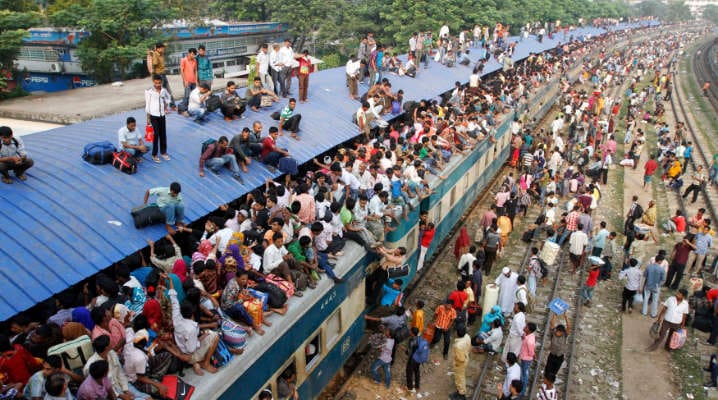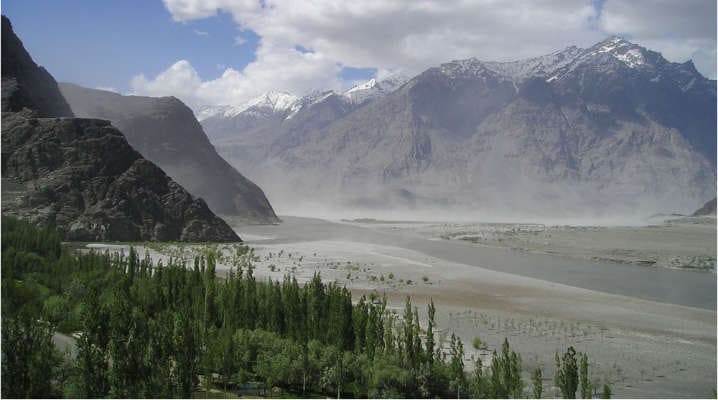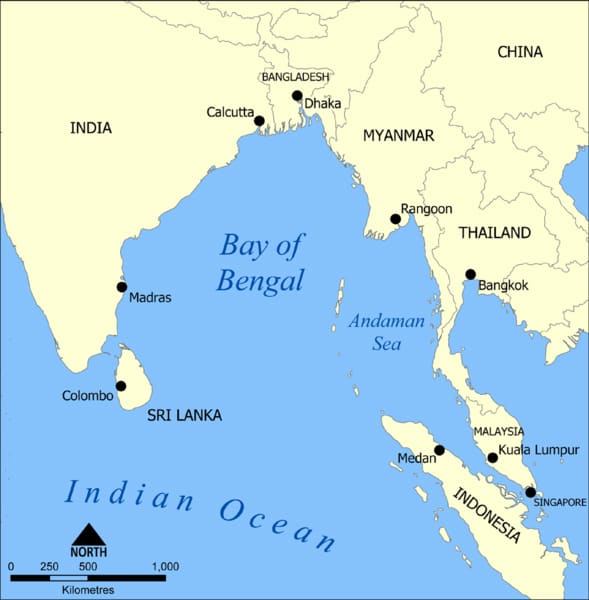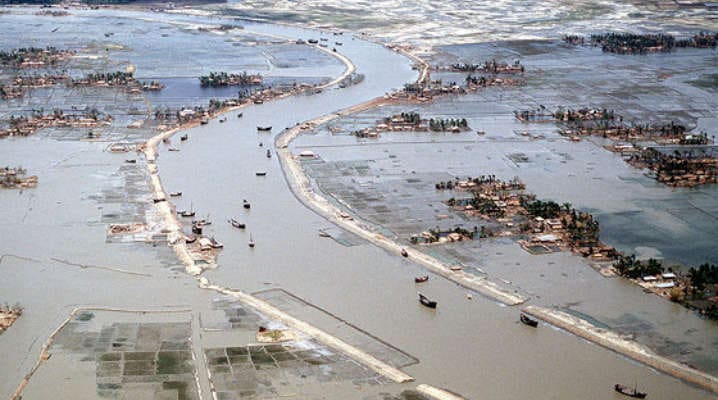Few would predict that growing populations, decreasing resources and climate change will have an effect on security. But what could they be? And how will they affect heavily-populated areas of the world? Michael Kugelman looks at the potential changes for South Asia in general, and India in particular.
Few regions are more environmentally insecure than South Asia.
The region faces rising sea levels and regularly experiences coastal flooding—of particular concern in a region with heavily populated and arable-land-rich coastal areas. Additionally, it is highly vulnerable to glacial melt. The Western Himalayas, which provide water supplies to much of South Asia, have experienced some of the most rapid melt in the world.
Natural resource deficiencies are stark as well.
South Asia houses nearly a quarter of the world’s population, yet contains less than 5 percent of its annual renewable water resources. Water availability has plummeted from over 21,000 cubic meters per capita in the 1960s to about 8,000 in 2005.
According to recent estimates, some of the region could face water scarcity (per capita water availability under 1,000 cubic meters) by 2025. In South Asia, water shortage imperils food security and health, but also livelihoods—because farming and fishing are dominant sectors.
Meanwhile, energy is similarly lacking in South Asia. The World Bank has ranked its electricity grid as one of the world’s worst. Millions of South Asians do not have electricity—including 400 million in India alone.
Running dry on resources
India, in fact, is a microcosm of the region’s environmental insecurity. A recent Center for Global Development study projects that nearly 40 million people in India—more than in any other country—are at risk of dying from rising sea levels by 2050. It also estimates that because of rising temperatures, India’s agricultural productivity could fall by 35 to 40 percent by 2080.
India boasts over 20 percent of the world’s population—yet only 4 percent of its water. About 25 percent of Indians — 250 million people — lack access to clean water. So extensive is India’s water consumption that users are raiding groundwater supplies with abandon. According to the World Bank, India is the world’s most voracious consumer of groundwater. A U.S. study in 2009 found that groundwater levels fell by four centimetres per year between 2002 and 2008 in three northwestern states—including Punjab, the nation’s chief breadbasket.
A similar story prevails with energy. India’s economic growth has sent demand skyrocketing, and estimates peg India as the world’s third-largest energy consumer by 2030. However, the nation, as dramatically demonstrated by the 2012 summer’s monster power outages, struggles to meet demand.
Links to stability and security
While climate vulnerability and resource constraints have received heightened attention in recent years, their ties to stability and national security often go unaddressed. In India, these links are particularly sharp.
Internal contexts
These connections play out in both internal and external settings. Regarding the former, a chief example is the Maoist anti-government insurgency. This rebellion is low-grade yet widespread; it extends to more than two thirds of India’s states, and is often referred to by the New Delhi establishment as the country’s gravest internal security threat.
The insurgency’s bastions lie in India’s eastern and central reaches — which happen to be the locations of the country’s chief reserves of coal, India’s most heavily consumed energy source. Given the country’s energy imperatives, New Delhi has a strong incentive to crush these insurgents — which it has done with heavy-handed shows of force that trigger civilian casualties and spark further recruitment to the rebellion.
Additionally, the basic drivers of the insurgency are tied to natural resource constraints. The fruits of heavy resource extraction — mainly coal — often fail to reach local communities, fueling grievances among poor villagers that the Maoists exploit to spark recruitment. Intensive coal mining in these areas also displaces locals and creates toxic living conditions for those who stay — further strengthening the insurgency.
External contexts
The external manifestations of links between India’s resource woes and security are discernible in ties with Pakistan. With energy demand rising, India has increased its construction of hydropower projects on the Indus Basin’s western rivers. These waters are allocated to Pakistan by the Indus Waters Treaty — though India is allowed to use them to develop dams and other hydropower projects that do not store any water. However, some Pakistanis take a different perspective, contending that India is “stealing” Pakistan’s water. Such accusations become a security matter when they emanate from the likes of the Laskhar-e-Taiba (LeT), an anti-India militant group. The LeT has threatened to attack India in response to India’s alleged water theft.
Another external example of India’s resource-security links is its relationship with China. Since India lacks energy supplies at home to fulfill its immense demand, it is taking its search for energy abroad. This can bring it into fierce competition with China, whose growing regional and global presence is driven, to a great extent, by its own search for natural resources.
Some security analysts have depicted the Bay of Bengal as a future potential source of Sino-India conflict. This is an area off India’s eastern shoreline where China is investing in energy assets (not long ago, India discovered significant deposits of natural gas in this area). China has secured a major natural gas deal with Burma — and may conclude one with Sri Lanka. These are deals India has sought unsuccessfully. The fact that China received them has stoked the perceptions of some Indians that China is “encircling” India.
Water, meanwhile, is a key factor in border tensions between India and China. These tensions centre around one of the region’s rare water-rich areas, particularly Arunachal Pradesh (AP) state. China, like India, suffers from water insecurity. The North China Plain, one of China’s core breadbaskets, is acutely water-scarce, with per capita availability of only 225 cubic metres per year. The strategic significance of water-rich AP state, therefore, goes beyond the issue of territory. Finally, India is deeply alarmed by Chinese dam building on Tibetan Plateau rivers, including the Brahmaputra, which flow downstream into lower-riparian India.
The destabilising impact of climate change
The resource-stability nexus — and the implications for India’s national security — grows more troubling when considering the long-term consequences of climate change. Assigning causation between climate change and insecurity is risky, but several speculative conclusions can be made. One is that climate change will intensify existing internal conflicts. Climate change could aggravate a range of problems: displacement, food insecurity, water losses, and economic distress.
These problems will manifest most acutely in India’s least developed and poorest regions — and it is in these regions where most of India’s internal conflicts are based. These include central and eastern India, where the Maoists are strong, and in northeast India, home to festering separatist insurgencies. Existing resource-driven conflicts, such as state-rooted water-sharing disagreements, will be exacerbated as well.
Climate change could also aggravate India’s external security concerns. Existing water-related tensions with Pakistan and with China would likely worsen. However, perhaps the most serious threat would emerge from Bangladesh, a country with which India has bickered over the years due to transboundary water-sharing disagreements. Bangladesh’s extreme vulnerability to climate change will likely cause major flooding and agricultural losses in the coming decades. Millions of environmental refugees may stream across the border into northeastern India — a tense region with separatist tendencies, not to mention violence. In fact, arguably some of the violence in that region — including the state of Assam, which witnessed its most recent flare-up of strife this past summer — is driven by local resentment of Bangladeshis who have already migrated in recent years.
The way forward
How can India ease the threat that its resource constraints pose to stability? To a certain extent, its hands are tied (climate change, after all, is irreversible). However, two actionable policies come to mind.
One is better integrating resource considerations into security policy and planning. India’s navy, whose modernisation is driven in part by the need to protect far-flung energy assets abroad, is on the right track.
The other measure is for India to improve its resource governance, and to develop demand-side, conservation-based policies that better manage resources that are precious, but not yet scarce. Examples include
- better maintaining water infrastructure (40 percent of water in most Indian cities is lost to pipe leaks),
- more equitable resource allocations, and
- stronger incentives for using resource-efficient technologies and policies.
These actions would not eliminate India’s security concerns. But they would certainly make them more manageable.


